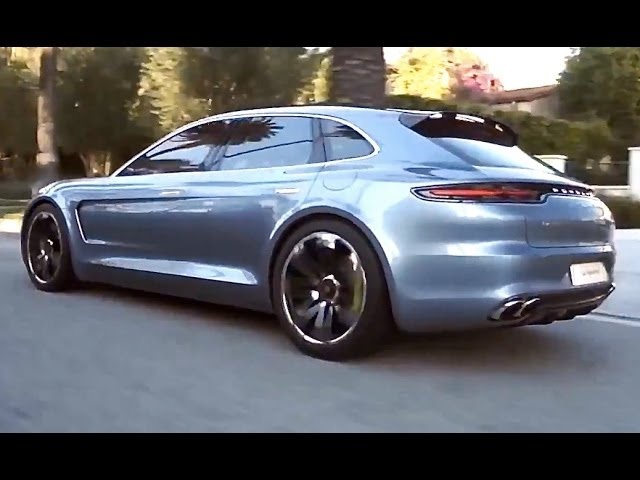Views: 503238
Rolls Royce Spirit of Ecstasy Lighting Up + Retracting 2014 Hood Ornament Carjam TV HD
CARJAM TV - Subscribe Here Now http://www.youtube.com/carjamradio
Like Us Now On Facebook: http://www.facebook.com/CarjamTV
For The World's Best Car Videos
Website: http://www.carjamtv.com
Twitter: http://www.twitter.com/carjamtv
Tumblr: http://www.carjamtv.tumblr.com/
Youtube: http://www.youtube.com/user/CarjamRadio
Today's Spirit of Ecstasy, from the 2003 Phantom model onward, stands at 3 inches and, for safety, is mounted on a spring-loaded mechanism designed to retract instantly into the radiator shell if struck from any direction. There is a button within the vehicle which can retract/extend the emblem when pressed. She can be made of highly polished stainless steel, stainless with 24-carat gold plate gold, or illuminated crystal - the latter two being optional extras. In the United States the mascot is often called The Flying Lady. The Flying Lady was a modified version of The Spirit of Ecstasy figurine to make it bow a little further in order to protect the bonnet. The Spirit of Ecstasy is the bonnet ornament (or hood ornament in the US) on Rolls-Royce cars. It is in the form of a woman leaning forwards with her arms outstretched behind and above her. Billowing cloth runs from her arms to her back, resembling wings.
The Spirit of Ecstasy, also called "Emily", "Silver Lady" or "Flying Lady", was designed by English sculptor Charles Robinson Sykes and carries with it a story about a secret passion between John Walter Edward Douglas-Scott-Montagu, (second Lord Montagu of Beaulieu after 1905, a pioneer of the automobile movement, and editor of The Car Illustrated magazine from 1902) and his secret love and the model for the emblem, Eleanor Velasco Thornton. Eleanor was John Walter's secretary, and their love was to remain hidden, limited to their circle of friends, for more than a decade. The reason for the secrecy was Eleanor's impoverished social and economic status, which was an obstacle to their love. John-Walter, succumbing to family pressures, married Lady Cecil Victoria Constance, but the secret love affair continued.
Eleanor died on 30 December 1915 when the SS Persia, on which she accompanied Lord Montagu on his journey to India, was torpedoed off Crete by a German submarine, four years after she had been immortalized by her lover.
Although it seems unchanged, the mascot had eleven main variations in its life. Lowered height of coachwork forced subsequent reductions in the mascot size. Consequently, several alterations in the original design were made.
Sykes was once again commissioned by Rolls-Royce in the 1930s to make a lower version of the mascot to suit the sports saloons.
The kneeling lady mascot was unveiled on 26 January 1934 (devised for the Phantom III of 1936-1939) and was as undeniably a reflection of Eleanor as it was a symbol of the Rolls-Royce. It also bore on the plinth the inscription "C. Sykes, 26.1.34", the date when the first piece was finished. This version was, however, discontinued after the Silver Dawn, Phantom IV and Silver Wraith models, in favour of a smaller version of the original standing mascot, and so it remains to date. The final 4 or 5 years of the Silver Wraith carried this standing version. http://en.wikipedia.org/wiki/Spirit_of_Ecstasy
On 18 January 2013, calling it the "car Charles Rolls would choose to drive", Rolls-Royce announced the Wraith as a model that would "indulge a passion for innovation, engineering and adventure".[4] Its chassis design was created by a Serbian designer, Pavle Trpinac[5] It has been reported that this will be the fastest and most luxurious British car to be built by Rolls-Royce.
Like Us Now On Facebook: http://www.facebook.com/CarjamTV
For The World's Best Car Videos
Website: http://www.carjamtv.com
Twitter: http://www.twitter.com/carjamtv
Tumblr: http://www.carjamtv.tumblr.com/
Youtube: http://www.youtube.com/user/CarjamRadio
Today's Spirit of Ecstasy, from the 2003 Phantom model onward, stands at 3 inches and, for safety, is mounted on a spring-loaded mechanism designed to retract instantly into the radiator shell if struck from any direction. There is a button within the vehicle which can retract/extend the emblem when pressed. She can be made of highly polished stainless steel, stainless with 24-carat gold plate gold, or illuminated crystal - the latter two being optional extras. In the United States the mascot is often called The Flying Lady. The Flying Lady was a modified version of The Spirit of Ecstasy figurine to make it bow a little further in order to protect the bonnet. The Spirit of Ecstasy is the bonnet ornament (or hood ornament in the US) on Rolls-Royce cars. It is in the form of a woman leaning forwards with her arms outstretched behind and above her. Billowing cloth runs from her arms to her back, resembling wings.
The Spirit of Ecstasy, also called "Emily", "Silver Lady" or "Flying Lady", was designed by English sculptor Charles Robinson Sykes and carries with it a story about a secret passion between John Walter Edward Douglas-Scott-Montagu, (second Lord Montagu of Beaulieu after 1905, a pioneer of the automobile movement, and editor of The Car Illustrated magazine from 1902) and his secret love and the model for the emblem, Eleanor Velasco Thornton. Eleanor was John Walter's secretary, and their love was to remain hidden, limited to their circle of friends, for more than a decade. The reason for the secrecy was Eleanor's impoverished social and economic status, which was an obstacle to their love. John-Walter, succumbing to family pressures, married Lady Cecil Victoria Constance, but the secret love affair continued.
Eleanor died on 30 December 1915 when the SS Persia, on which she accompanied Lord Montagu on his journey to India, was torpedoed off Crete by a German submarine, four years after she had been immortalized by her lover.
Although it seems unchanged, the mascot had eleven main variations in its life. Lowered height of coachwork forced subsequent reductions in the mascot size. Consequently, several alterations in the original design were made.
Sykes was once again commissioned by Rolls-Royce in the 1930s to make a lower version of the mascot to suit the sports saloons.
The kneeling lady mascot was unveiled on 26 January 1934 (devised for the Phantom III of 1936-1939) and was as undeniably a reflection of Eleanor as it was a symbol of the Rolls-Royce. It also bore on the plinth the inscription "C. Sykes, 26.1.34", the date when the first piece was finished. This version was, however, discontinued after the Silver Dawn, Phantom IV and Silver Wraith models, in favour of a smaller version of the original standing mascot, and so it remains to date. The final 4 or 5 years of the Silver Wraith carried this standing version. http://en.wikipedia.org/wiki/Spirit_of_Ecstasy
On 18 January 2013, calling it the "car Charles Rolls would choose to drive", Rolls-Royce announced the Wraith as a model that would "indulge a passion for innovation, engineering and adventure".[4] Its chassis design was created by a Serbian designer, Pavle Trpinac[5] It has been reported that this will be the fastest and most luxurious British car to be built by Rolls-Royce.
Make: Rolls Royce
More by CARJAM TV
-
 Porsche Panamera Estate Shooting Brake HD Porsche ...
Porsche Panamera Estate Shooting Brake HD Porsche ...
 Porsche
Views: 20178
Porsche
Views: 20178 -
 Land Rover Defender 2018 INTERIOR World Premiere ...
Land Rover Defender 2018 INTERIOR World Premiere ...
 Views: 225158
Views: 225158 -
 BMW X7 LIMO INTERIOR All Options Video BMW SUV ...
BMW X7 LIMO INTERIOR All Options Video BMW SUV ...
 BMW
Views: 60948
BMW
Views: 60948 -
 Rare Mini Rally Dsquared In Detail Commercial ...
Rare Mini Rally Dsquared In Detail Commercial ...
 Mini
Views: 2559
Mini
Views: 2559





